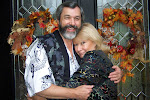And its opposite number the famous French Soixante-Quinze (75) mm. None of those fighting in the Great War knew that 1918 would be the last year of the terrible conflict. Yet it was and New Year's Day 1919, saw a World that while not at total peace, as least saw the guns of the Great War silent.
These are metal pieces from Old Glory that I painted for my Great War Armies back in 2010.
May 2023 be a good one for you and yours, and hopefully the current guns of war will fall silent as they did in the Great War 125 Years ago.





